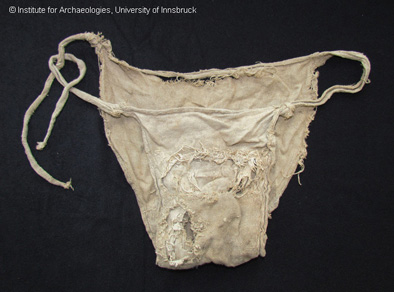Q&A: Archaeologist Unearths 600-year-old Bra in Castle
Though in tatters, the undergarment looks thoroughly modern. But was it comfortable!?
/https://tf-cmsv2-smithsonianmag-media.s3.amazonaws.com/filer/Lengberg_bra_600_years_470.jpg)
It was a mere couple of weeks ago on Threaded, on the supposed 66th birthday of the bikini, that I suggested that the two-piece was, in fact, much older—500 years older based on an Italian mosaic in Sicily.
Now, we’re left to ponder another widely held assumption, but this time the undergarment in question is a bra.
Last week, Beatrix Nutz, an archaeologist and researcher at the University of Innsbruck in Austria, shook the foundation, so to speak, in an August 2012 article in BBC History, announcing that she had unearthed four bras and a pair of underwear dating back to the 15th century. Found in an Austrian castle amid dirt, wood, straw and leather, the underpinnings were among more than 2,700 textile fragments excavated in 2008, but the discovery only recently become publicly known.
Particularly jaw-dropping is the discovery of a Middle Ages bra that looks strikingly similar to the modern version patented in the United States in the early 20th century. Fascinated by the images of her discovery (including a pair of undies, likely worn by men at that time but resembling the panties women don today), I reached out to Nutz to learn more.

Recently discovered 15th-century male underpants resemble modern female underwear
Until now, we thought the bra came along after the corset. Now, in the chronology of foundation garments, it appears that the bra came first, followed by the corset, followed by a version of the brassiere we’re familiar with today. In your opinion, what makes this a particularly worthy discovery?
This find reminds us once more not to believe that we already know everything about our past—there’s always some new/old things to discover.
What does this new timeline tell us about the evolution of women’s apparel?
Evolution sometimes takes a break. The Greek mathematician and geographer Eratosthenes (276 B.C.-195 B.C.) knew our planet was a globe and even calculated its circumference, but throughout the Middle Ages people believed it to be a flat disc.
Bras are certainly not even remotely as important as the actual shape of the earth, but they were obviously invented, went out of fashion, were forgotten, and supposed to be invented (again) in the late 19th century. Now the first invention was rediscovered in Lengberg Castle—that is, until someone finds still older ones somewhere. Never say never.
Lace and other ornamentation were preserved in the bras you discovered, suggesting that this medieval lingerie was likely intended for someone else’s eyes. Were bras a social construct at that time? Why were they worn?
There are some written sources that, although few and far between, provide us with some insight as to the why and who. The French surgeon Henri de Mondeville (1260-1320) reported what women whose breasts were too large did. They “insert two bags in their dresses, adjusted to the breasts, fitting tight, and put them into them every morning and fasten them when possible with a matching band.”
To contain and flatten was one reason. This being utilitarian but also for beauty as Mondeville considers too-large breasts to be a disgrace.
An unknown German poet of the 15th century wrote in his satirical poem “Many makes two breastbags , with them she roams the streets, so that all the young men that look at her, can see her beautiful breasts.”
These women wanted to attract attention by enhancing their breasts. Fashion was already important even back then.
Who typically wore these bras and what do we know about them?
Henri de Mondeville addressed women in general, or at least those that could read at that time, which would only have been members of the upper classes.
Both German authors seem to have referred to burghers, but as the “bras” from East-Tyrol were found in a castle, one can expect the nobility to have worn them as well.
/https://tf-cmsv2-smithsonianmag-media.s3.amazonaws.com/accounts/headshot/emily-spivack-240.jpg)
/https://tf-cmsv2-smithsonianmag-media.s3.amazonaws.com/accounts/headshot/emily-spivack-240.jpg)